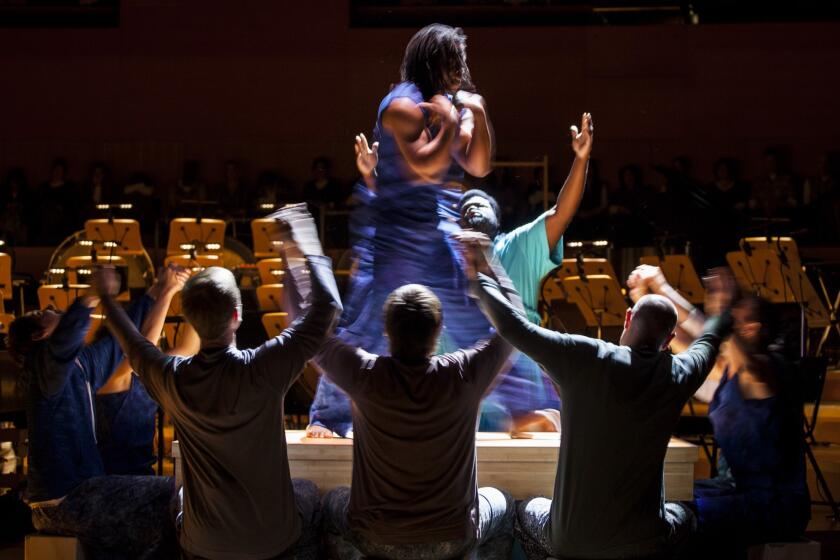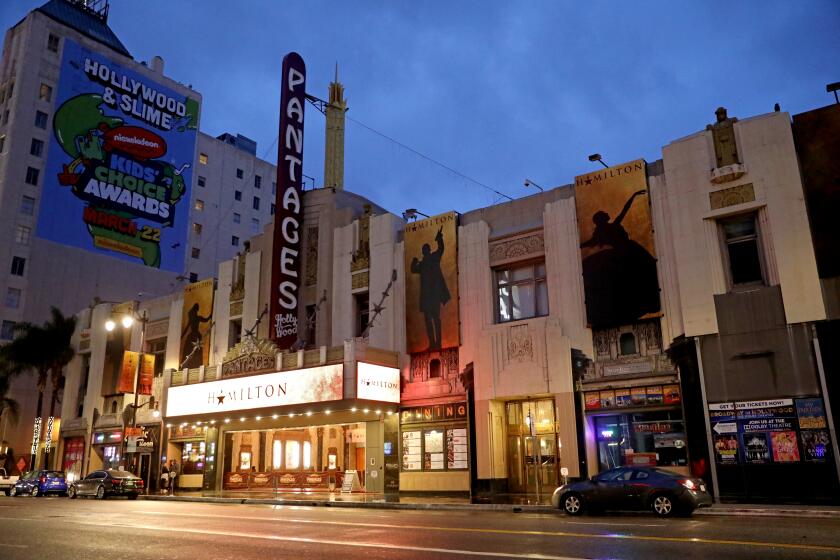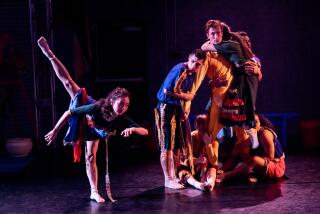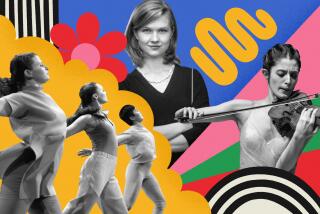Can artists find a silver lining in the cloud of COVID-19? Peter Sellars is looking
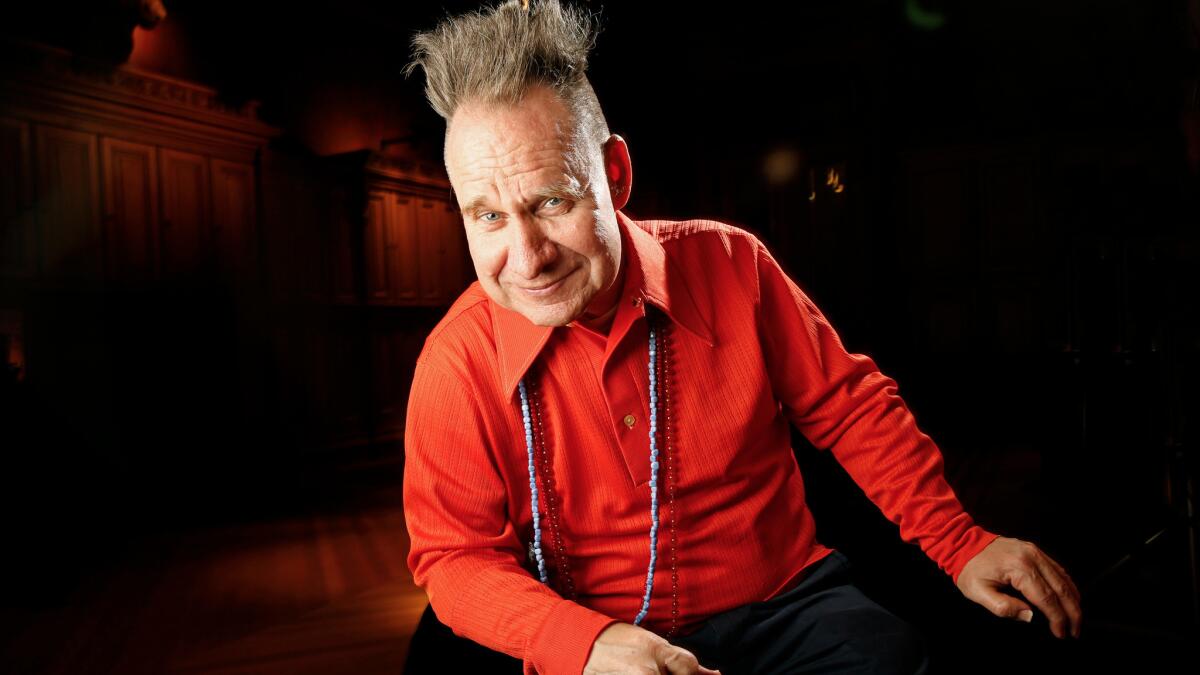
Throughout his career, Peter Sellars has — be it in opera, theater, teaching or the director’s innumerable talks and interviews — demonstrated how whatever is at hand might serve to make ourselves more alive. Tragedy serves. Comedy serves. History serves. Spirituality serves. Human relationships serve.
In all cases, the messier, the more revelatory. Art, meant for the moment, is always for Sellars about healing. This, then, is one epic moment.
“My feeling is truly we are in the midst of a new era trying to be reborn,” he said, reached by phone in Culver City. “And, yes, the labor pains are fierce.”
On the go at a ridiculously high energy level for the last four decades, Sellars said that one unforeseen advantage of the pandemic is that the isolating has forced him, like the rest of us, to finally stop and deal with “where you are and who you are.”
If we can figure out what we truly need and what we don’t need, Sellars said with his trademark hard-won optimism, “maybe, just maybe, we will emerge differently.” Rather than jumping on a plane every other week, he leads a life now consisting of an early morning walk and then time at home alone surrounded by his enormous library. And, of course, no more hugging, for which he is famously beloved. “I’m deeply illegal,” he joked.
At the moment, the “complete drying up of income in the arts means that there’s no cash flow and most of the individual artists and smaller arts groups will find it really hard to make it through this period,” Sellars said. “So that’s the other side of all that.”
This happens to be something for which Sellars is well prepared, having over the last several years spoken about the virtues of scaling down. While he has continued to direct the occasional, relatively expensive Mozart opera at the Salzburg Festival in Austria, more and more he has been thinking small.
“I’ve been trying to focus very intensely on small scale but large, large meaning and purpose, on a sense of utility,” he said. “I think that now we all need ways to get real and to express things that are complicated and difficult in a way that is extremely concentrated, not just fill time and space.
“And guess what came along, is something that actually makes that clear.”
Passover and Easter inspired some of the most spiritually profound music. Why it’s time to hear these works by Bach, Wagner, Schoenberg and Adams.
Signs have long pointed that we were heading on an unsustainable path in art and society.
“Of course, it is this magical thing taking you to another era in human history where music was made in people’s homes,” Sellars said, “and where a sense of intimacy is at the very heart of the artistic project. There can be an extremely high level of integrity when you’re working to scale, but the minute you scale things up — that gets really difficult to maintain. The way grassroots people keep each other honest is quite beautiful and quite moving.”
Economic implications are obviously at the heart of this, but not, Sellars suggested, perhaps, in the front-and-center way.
“Finally, the conversation is not being dominated by money,” Sellars said with a sense of triumph in his voice, “but by something else.
“Money is not what we’re talking about at the moment. Mostly if we hear anything in the public sphere, it’s because somebody paid for you to hear it. So almost everything in the public sphere for these last years, whether considered propaganda or public-spirited, is actually the sound of money.
“So what does it mean that money is not the primary factor?”
That question leads Sellars to questions about how do we, then, sustain public art and, in doing so, “how do we replant democratic roots in a democratic society which has gone a long way from democracy because it’s been for sale for so long?”
It’s not orderly, he said. It’s not simple. But the very bigness of such questions is the opportunity for change that involves everyone.
“The virus is not interested in borders,” Sellars said. “It’s not interested in border security. The virus moves in a way that actually is a wake-up call.”
What heartens Sellars is a basic human need for creativity. “Frankly, a new generation is on top of all of this,” he proclaimed, “and it’s making moves that are way faster than you and I can move.
“I’m hearing from so many students. One guy has a whole film festival going on in Brooklyn. Films made in people’s apartments. It’s a counter-virus film festival, and they now have 20 features proposed to be shot in the next month.”
Donate the cost of a canceled ticket, take an online dance class, buy a piece of fine art: Here are 22 ways to help artists weather the coronavirus storm.
It’s far too early to know what any of this will lead to, but artists, Sellars said, are drawn to tragedy for what it has to teach us.
“This kind of suffering doesn’t just show up for no reason, and that there is something to be recognized and learned and absorbed and understood,” he said. “And that’s what this moment is.”
Sellars’ solution is to take the time to delve as deeply as he can into projects that he has long thought about and that seem especially pertinent now, such as staging the “Vimalakirti Sutra.” The ancient Buddhist scripture dwells on the nature of silence, and pondering it for more than two decades Sellars finally staged a workshop of one part in the Hammer Museum last spring with the dancer Michael Schumacher and the Carnatic singer Ganavya.
“Just staging a Buddhist sutra with two people and projecting the words,” Sellars said, “feels really powerful and beautiful and right. We’re going to do another chapter with one of the world’s master calligraphers, Wang Dongling. This section of the sutra is very famous because it’s about the presence of sickness, what is the meaning of sickness in your life.
“The content is from the 1st century and isn’t going anywhere. That’s going to be with us long term. The theatrical resources are pretty basic: three people, a microphone and a projector for the titles.”
And the subject matter is elemental: nonduality, nothingness. Sellars said the bottom line for him is that “art is about creating something from nothing. Art is about realizing how powerful nothing is, nothing in the Zen sense of removing ego, removing the material object, just absolutely focusing and letting nothing be the point of entry.
“That is the point where you let go of everything, finally, not holding on the stuff. You let go. You recognize the power of nothing. You recognize the rhythm of nothing. You recognize that nothing actually is liberation.”
Sellars also said this leads to answers for work with bigger institutions, such as the Los Angeles Philharmonic. In October the orchestra is planning to remount “The Tristan Project,” Sellars’ epic collaboration with Esa-Pekka Salonen and video artist Bill Viola. It is expected to happen, but nothing is certain anymore. The coronavirus crisis is hitting orchestras, large and small, extremely hard.
“If anybody’s going to float in this period, Gustavo will,” Sellars said of artist and music director Gustavo Dudamel, adding that he’s certain the L.A. Phil is in the right hands. “My goodness, talk about not having a maestro who is just about his hair!
“Gustavo grew up with music in the culture of incredible deprivation. He grew up with nothing, and the music was the something in a situation where they had nothing. I think Gustavo, in the end, has the compass that will come through this.
“And so much of the most powerful art has been made from people who started with nothing. Let’s actually treasure the sense that we’re right up against what we don’t have, and therefore something new has to be created and imagined and invented and brought forth like a flower, something that is just a seed. That is the miracle. That is why we’re on Earth.
“It’s always scary. But if it’s not scary then you’re not making art and you’re not living life. That’s the job description.”
More to Read
The biggest entertainment stories
Get our big stories about Hollywood, film, television, music, arts, culture and more right in your inbox as soon as they publish.
You may occasionally receive promotional content from the Los Angeles Times.
